Would you like to know how to best approach growing your law firm using Google search marketing?
In this article, I’ll walk you through expectations and realities on how to approach and capture search intent for your law firm using Google search advertising.
Leveraging your audience’s search intent
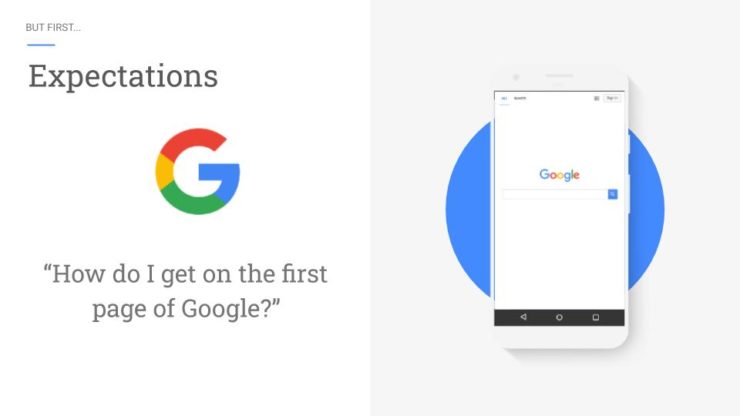
Here’s a question I get asked almost every single day: “James, tell me, how do I get on the first page of Google?”
Now, let me address this up front and tell you right now. It’s not all about getting on the front page of Google.
Instead, what I encourage you to do is to move your thinking towards how to leverage your audience’s search intent to get your brand in front of them with the relevant offer that drives more sales and revenue and profit back to your firm rather than how to get onto the first page of Google.
The #1 Most Common Mistake People Make When Advertising In Google
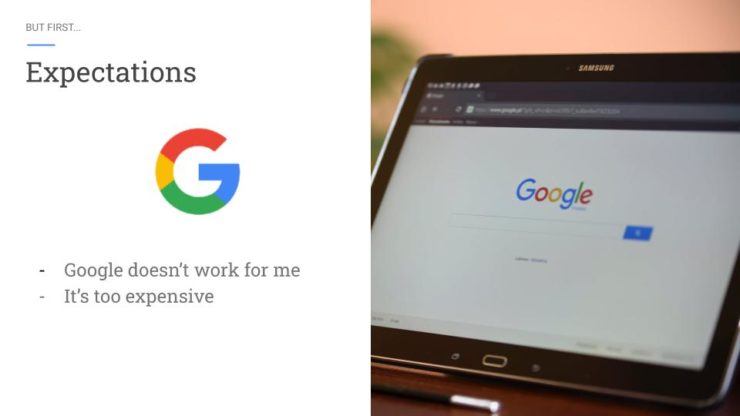
Let’s be real: Google Ads & SEO is no new kid on the block. In fact, they’ve been around for over 15 years.
A lot of people have tried SEO and Google Ads before with often mixed results.
For those reading that have tried either or before and it hasn’t worked, I really want you to question those thoughts to understand that what matters ultimately, with any form of marketing, particularly Google marketing is that your goals, your objectives from wanting to market on Google should be focused around driving bottom line business growth.
Most people go wrong by designing their SEO and Google Ads strategies around false positives and vanity metrics. They think that more traffic should equal more leads. They think that bidding on keywords with the smallest cost-per-click is a fine approach. They think that getting into position one in both organic and paid search should be the goal.
This is the completely wrong approach and is a sure-fire way to only make Google rich, and not yourself. And let’s face it, Google doesn’t need anymore money!
Here’s what you should be focusing your SEO and Google Ads campaign strategy around
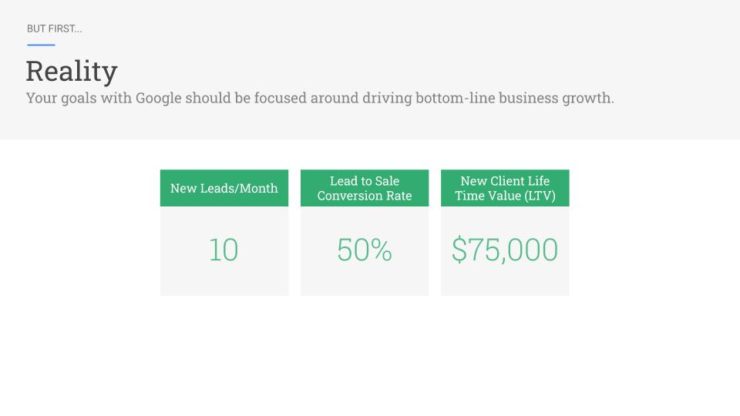
Let’s role play for a second here.
Let’s say you increased the amount of leads coming to your firm by an additional 10 per month. If you have a lead-to-sale conversion rate of 50% that is, you meet with two people and out of those two, one of them becomes a client.
You know that your average life-time-value per client is around $15,000 over 12-month proceed.
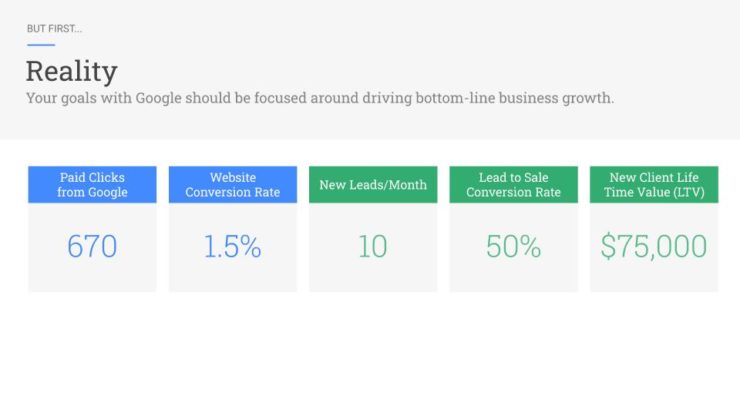
Let’s play with this scenario a bit more.
Let’s say your website converts at a 1.5% conversion rate. That is, out of all traffic coming to your website, you convert 1.5% of that traffic into a enquiry lead. By the way, the typical website enquiry conversion rate we see for most un-optimised B2B professional service websites is about 1.5%.
As an example, let’s say you bought the keyword ‘lawyers’ in Google and paid $6 per click and got 670 clicks from Google to your website. Big disclaimer: I would never recommend any law firm to bid with the keyword ‘lawyer’ as it is too broad. I am simply using this as an example to explain this scenario in the easiest to understand manner possible.
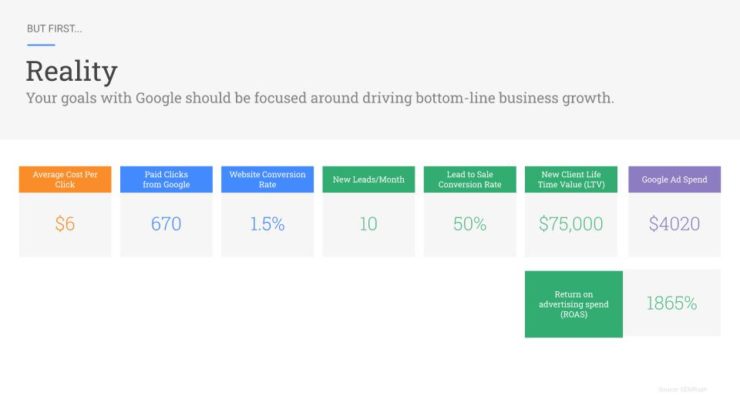
Now you might be thinking that paying $6 for a click in Google search is ridiculous and way too expensive.
Before you click off this article, let’s look at this situation under the context of driving bottom-line business growth.
At $6, you’re getting 670 clicks which means you’re spending about $4,000 bucks per month on Google. You’re converting 1.5% of those clicks to give you 10 new enquiry leads per month. If you convert half of those enquiry leads, that’s $75,000 in new life-time revenue to your business.
The reason why this scenario is profitable is the unit economics make sense. Professional services, such as the legal sector can typically earn a lot more per lead than say, a consumer business selling widgets via drop-shipping.
With that said, even with a higher than average cost-per-click, search advertising can be a profitable exercise if you know what you’re doing and you do it correctly.
In summary, the number one thing I want to hit home hard is your search advertising objectives must be aligned with achieving bottom-line business growth in your firm.
Measuring the net business success of your lead generation campaign on vanity metrics such as cost-per-impression (CPM) and even cost-per-click (CPC) can lead you down a rabbit hole of pretty reports with no revenue to show. These metrics shouldn’t be ignored in the overall strategy of running a successful search marketing campaign, but they should not be what’s driving the performance of your campaign.
Instead, focus on what’s moving the needle with your business’s bottom-line and evolve your strategy from there.


